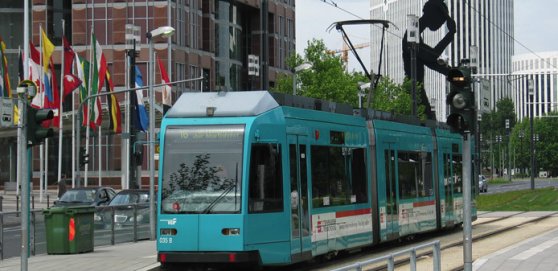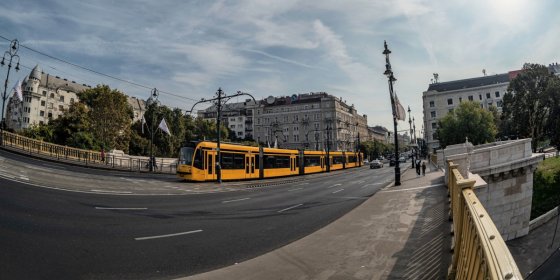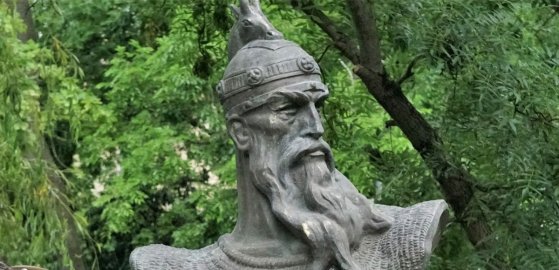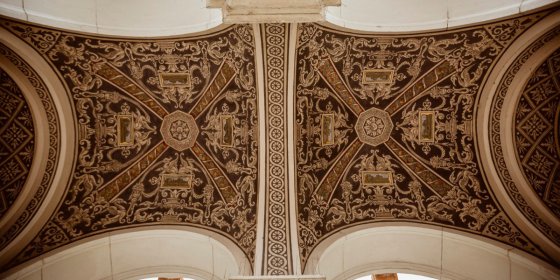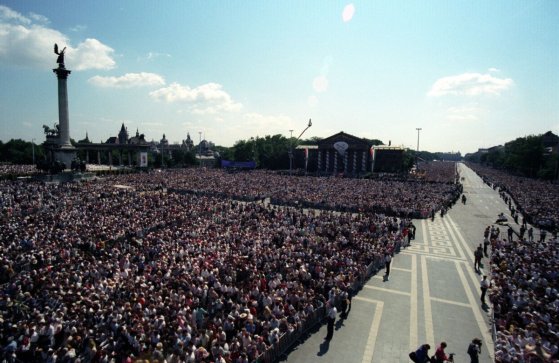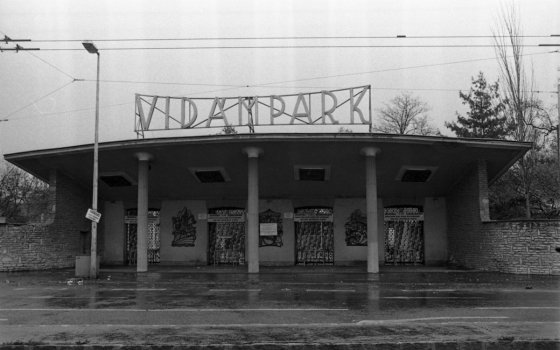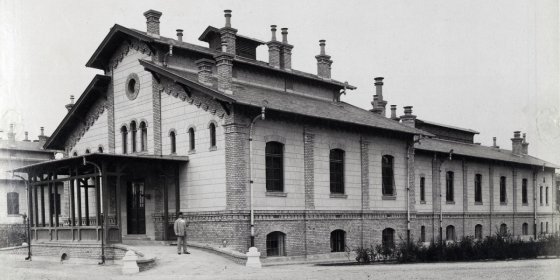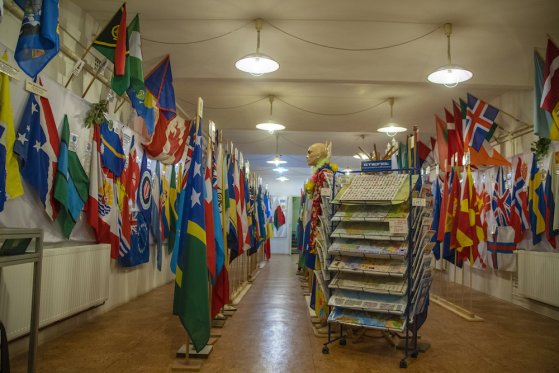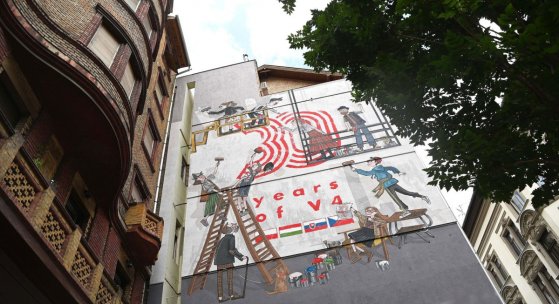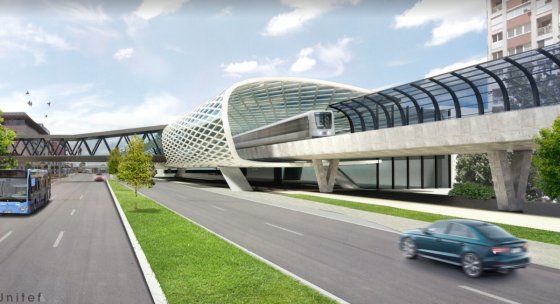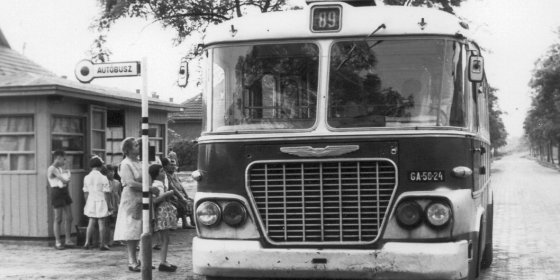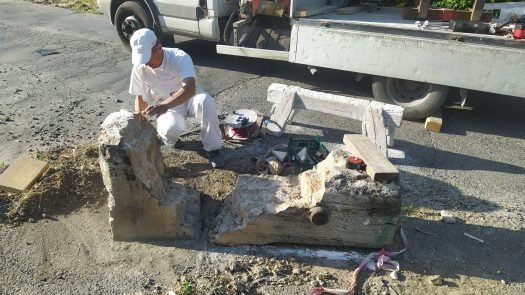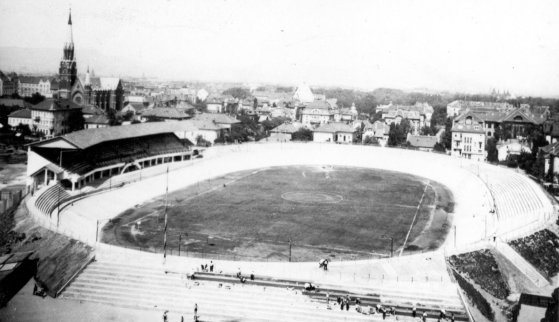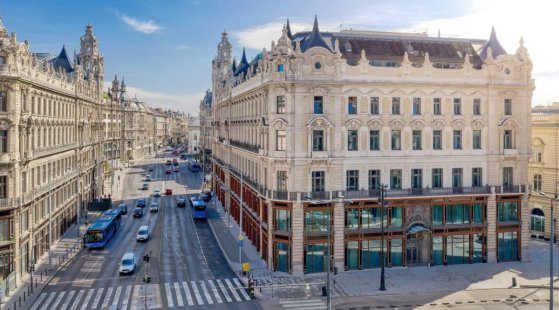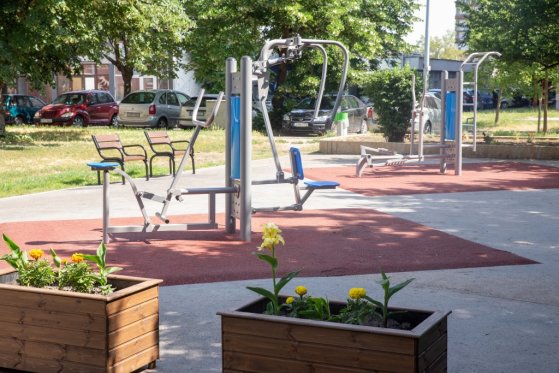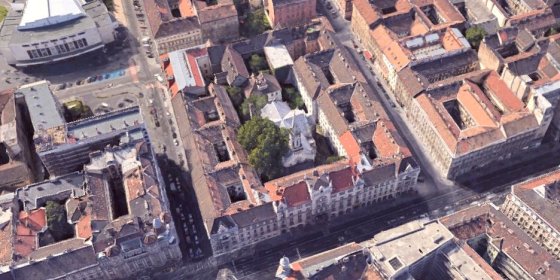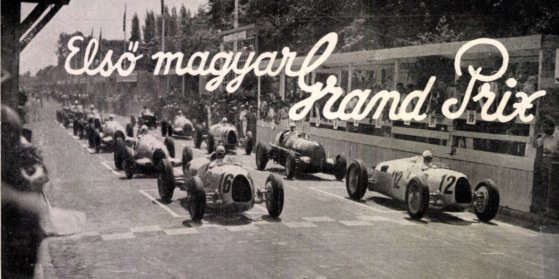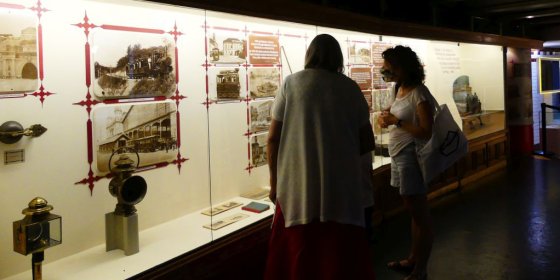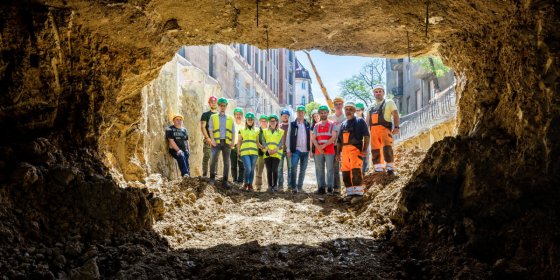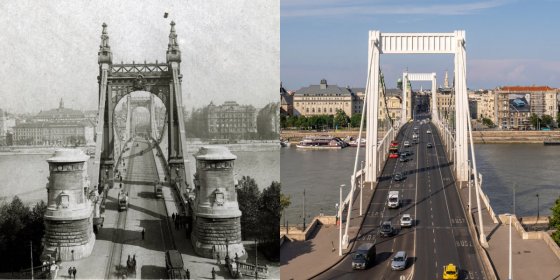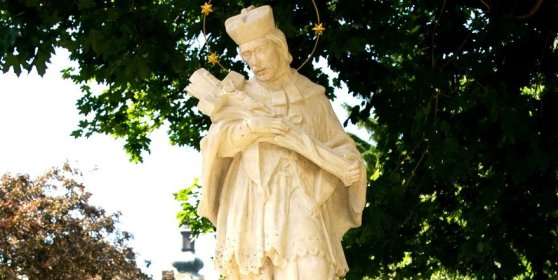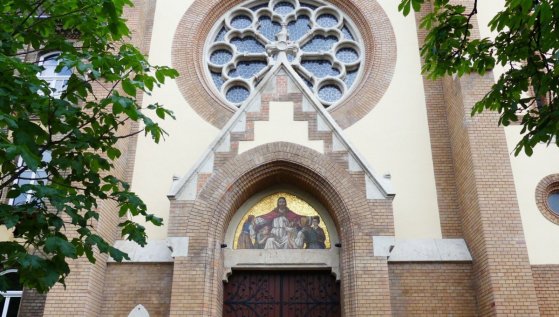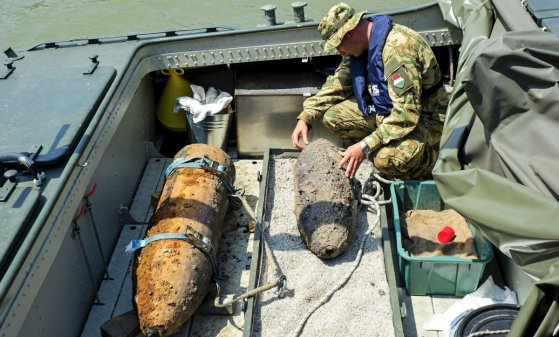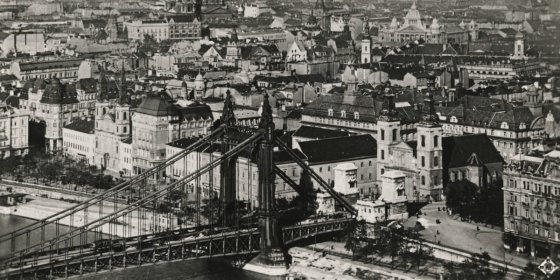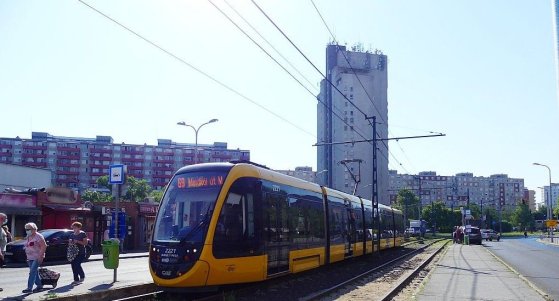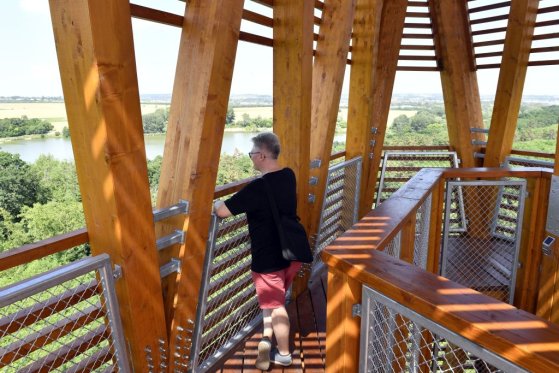 The „intertwined history” of the bridges and the city of Budapest
Which ideas and events have shaped the fate of bridges of Budapest and the cityscape? Alongside many other interesting facts, this question is also answered this newly published book by the Budapest City Archives, which introduces the history of bridges in Budapest.
The „intertwined history” of the bridges and the city of Budapest
Which ideas and events have shaped the fate of bridges of Budapest and the cityscape? Alongside many other interesting facts, this question is also answered this newly published book by the Budapest City Archives, which introduces the history of bridges in Budapest.
pestbuda.hu
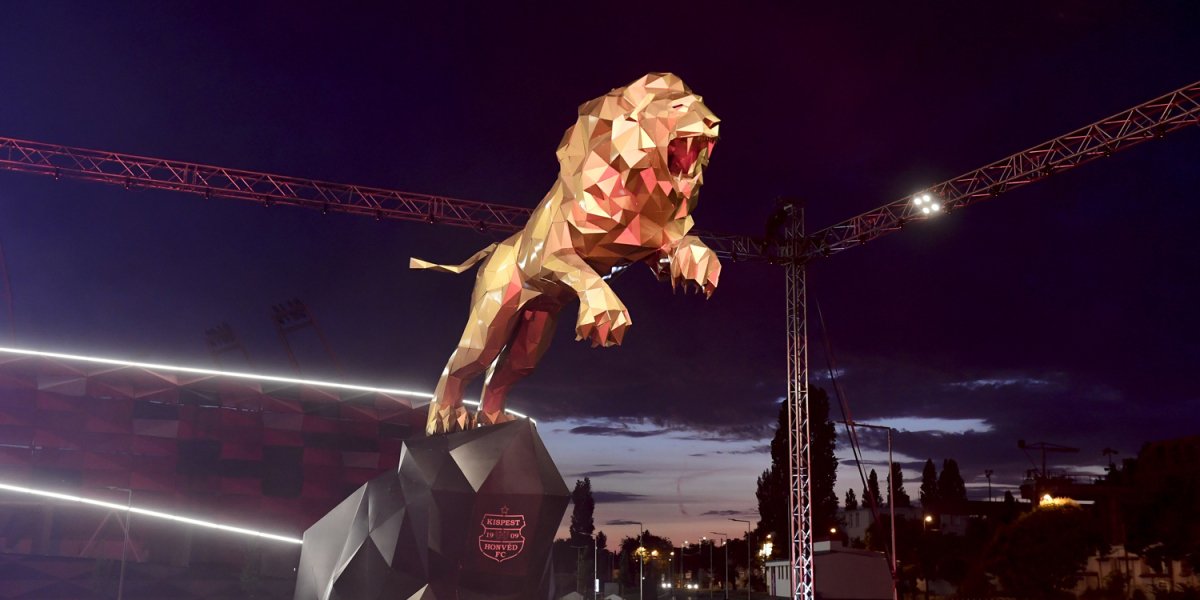 The statue of Honvéd's Golden Lion was inaugurated in front of the Bozsik Stadium in Kispest
The statue of Honvéd's Golden Lion was inaugurated in front of the Bozsik Stadium in Kispest
July 6, 2021 at 9:01 PM
One of the newest statues in the capital was erected in the 19th District, in front of the entrance to the renovated Bozsik Stadium. The 6-ton stainless steel lion statue, made of 5-6 thousand elements, was made for 4-5 months, and its special feature is that it can be illuminated with red light from the inside, giving it a glowing effect.
Will there be air conditioning on the Frankfurt trams coming to Budapest?
July 6, 2021 at 5:00 PM
According to the BKV (Budapest Transit Company), the air conditioning of used Frankfurt trams can be solved by structural modifications.
Many kinds of trams have served Budapest in recent decades
July 6, 2021 at 9:30 AM
UV, ICS, Bengali, CAF, Combino, Hanover - these trams have defined tram transport in Budapest in recent decades. Now more CAF products are in service, but take a look at what kind of trams the people of Budapest used and what do these weird names mean?
A statue was erected for Skanderbeg, an ally of János Hunyadi, in the Városliget
July 5, 2021 at 4:00 PM
The bust of Skanderbeg was inaugurated in the neighborhood of Vajdahunyadvár, on the Platán promenade in the Városliget. The work is a gift from the city of Tirana to Budapest. Albanian prince Skanderbeg once fought in alliance with János Hunyadi against the expansion of the Ottoman Empire.
From the Opera House to the Parliament - The decorative painting of several representative buildings is the work of Róbert Scholtz
July 5, 2021 at 9:30 AM
Ornate public buildings and palaces were defining parts of the cityscape of Pest-Buda, which became a more and more civilized city and a metropolis. Róbert Scholtz, a decorative painter, played an important role in decorating many representative buildings, and his work is famous for, among other things, the St. Stephen's Hall, which was destroyed in 1945, but will soon be rebuilt.
Pope Francis presents the closing mass of the Eucharistic Congress on Heroes Square
July 4, 2021 at 5:00 PM
It has now become official that the closing mass of the 52nd International Eucharistic Congress held in Budapest will be presented by Pope Francis. Thus, 30 years after the papal Mass held on 20 August 1991, Heroes' Square will be the site of such a remarkable event again.
Once upon a time there was the Amusement Park - In the early 1800s, the former 'Vurstli' settled in the Városliget
July 4, 2021 at 9:30 AM
The history of the former Amusement Park of Budapest dates back a long time: performers in Városliget entertained the population of the capital since the beginning of the 19th century. The Vurstli, the Ős-Budavár, the Angol Park, and from 1950 the Amusement Park of Budapest were all created to entertain people. The Amusement Park, which has had several golden ages, was finally closed in 2013, and in its place the Holnemvolt Vár can now be seen and the Pannon Park is being built, which will perhaps restore the atmosphere of the former entertainment district.
Reporting infectious patients was ordered 140 years ago in Budapest
July 3, 2021 at 9:00 AM
Diseases and epidemics are part of our history, as we have seen in the last year and a half. In the XIX. century people began to recognize how each disease spreads and how to prevent them. The new epidemiological rules came into force in Budapest 140 years ago, on 1 July 1881. The obligation to report, and quarantine still helps to control epidemics today.
The unique collection of the Flag Museum will be on display again
July 2, 2021 at 4:30 PM
The Hungarian Museum of Trade and Tourism hosts the Flag Museum, which has been operating in Józsefváros since 1995. In the spring, the local council decided not to support the institution, which closed in the room on the corner of József körút - Nap utca. After scientific processing, the collection will be re-presented to those interested in temporary exhibitions.
Klauzál Street commemorates the 30th anniversary of the V4 Group with a mural
July 1, 2021 at 8:00 PM
In Erzsébetváros, at 32 Klauzál Street, you can see the firewall mural made for the thirtieth anniversary of the formation of V4s by Hungary, the Czech Republic, Poland and Slovakia.
Preparations for the development of the Gödöllő and Csömör HÉV will resume
July 1, 2021 at 4:30 PM
The planning of the connection of the H8 Gödöllő and the H9 Csömör suburban railway lines (HÉV - helyiérdekű vasút) and the metro line 2 continues. Part of the investment is the complete renovation of the suburban railway lines. The Örs Vezér Square's bus traffic will be transformed after the connection with the metro.
The unified ticket and pass system was introduced in public transport in Budapest 55 years ago
July 1, 2021 at 9:00 AM
By the mid-1960s, there were already 130 types of tickets for transport companies in the capital. The system was non-transparent, and the companies had much less revenue from tickets than the cost of operating the system. Therefore, a new fare system was introduced in Budapest on 1 July 1966, which has actually survived to this day.
The broken border stone is being restored in Óbuda
June 30, 2021 at 5:57 PM
The nearly 150-year-old border stone on Aranyhegy is being restored in Óbuda. The special landmark at the intersection of Határkő Street and Jutas Street in the 3rd district broke in two last year.
The first Hungarian international football match was played at the Millenáris in Zugló - The field called the cradle of Hungarian sports is 125 years old
June 30, 2021 at 4:00 PM
Today, when it comes to the Millenáris everyone thinks of the popular Buda park, although the Pest side also has its own Millenáris. The Millenáris in Zugló, which is the first sports field in Budapest, has been operating for 125 years, and many also refer to it as the cradle of Hungarian competitive sports. The tilted winding cycling track, the velodrome, was already one of the most modern tracks of its time when it was built, after its reconstruction in 1927, tens of thousand supporters flooded the grandstand during the world championship organized here. The first public international football match in Hungary was held here.
Elegant hotel opened in the renovated southern Klotild Palace
June 30, 2021 at 10:30 AM
The Matild Palace luxury hotel opened in the southern Klotild Palace, in Ferenciek Square. The building, commonly referred to as Matild Palace, took five years to renovate, and as a result of the works, it regained its original appearance.
Multifunctional community space completed in Újpalota
June 29, 2021 at 2:00 PM
The community space recently inaugurated on Drégelyvár Street in Újpalota provides entertainment for younger children and the elderly. The 15th District local council renovated the neglected park.
Flórián, the first real shopping centre in Hungary, opened 45 years ago
June 29, 2021 at 9:30 AM
The Flórián shopping centre, then officially called Óbudai Centrum Department Store, was the first real shopping centre in Hungary. The building was handed over 45 years ago. It was built to serve the housing estate of Óbuda and North Buda, and it was so important that even the Roman ruins found here, the remains of the command building of the former legionary camp were sacrificed for it.
Slovak Lutheran Church to become cultural centre
June 28, 2021 at 5:00 PM
The former Slovak Lutheran church in Pest, No. 57 Rákóczi Road, is being renovated and transformed into the cultural and community centre of Slovaks in Hungary. The Hungarian and Slovak Governments are supporting the multi-phase works – the parties signed an agreement today.
The first Hungarian Grand Prix in Népliget, held 85 years ago, was a huge sports success, but a commercial failure
June 27, 2021 at 9:00 AM
The most prestigious car race today is Formula 1, which has had races in Hungary since 1986. However, 50 years before Formula 1, in 1936, a Grand Prix was held in Hungary, namely in Népliget. The competition was successful from a sports standpoint, but a commercial disaster.
The Millennium Underground Railway was envied by the Viennese - New exhibition on the underground opens
June 26, 2021 at 3:00 PM
If someone is visiting Deák Square and has half an hour to spare, the Underground Railway Museum has a new exhibition to offer about the 125-year-old Millennium Underground Railway. Numerous photographs, artefacts, plans and models have been exhibited, from which many hitherto lesser-known curiosities are revealed.
A decades-old plan comes to life – A tunnel connecting Széll Kálmán Square with Városmajor
June 25, 2021 at 9:00 AM
The construction of the new pedestrian crossing connecting Széll Kálmán Square with the Postapalota (Postal Palace) and Városmajor started last autumn, the two ends of which met under Várfok Street almost a month ago. The tunnel, which is expected to be completed by the end of the year, will not only provide an unobstructed passage for pedestrians and cyclists in the area to Városmajor but will also create a new entrance to the former Postapalota, also known as the Buda Palace.
Facade of the residential building that houses the Radnóti Theater is being renovated
June 24, 2021 at 4:00 PM
The facade and the balcony of the building at 11 Nagymező Street in Terézváros have become accident-prone, leading to the renovation. During the works, the missing limestone slabs and balcony slabs on the facade will be replaced, and the work is expected to be completed by the end of the summer.
Budapest then and today – 5 photos showing how much the city has changed over a century
June 24, 2021 at 9:00 AM
Comparing past and present is always exciting. Walking around the city, one can often wonder what this or that street used to look like, what houses stood, and which were built later. If someone looks at an archive picture, the old buildings that still stand today, such as the Parliament or the St. Stephen's Basilica, help them find their way. At the same time, they can admire the once small-town atmosphere of Csalogány Street, the almost unrecognisable Deák Square or the old Erzsébet Bridge that many still consider to be one of the most beautiful bridges built in Hungary.
Statue of St. John of Nepomuk renovated in Budafok
June 22, 2021 at 4:00 PM
The baroque statue of St. John of Nepomuk, the patron saint of sailors, made around 1750, has been restored in the 22nd district on Hosszúhegy Square. During the renovation, the head of the 1.7-meter-high figure was replaced with the original one, and a missing wreath of stars was also returned to the saint.
Built as a church of gratitude, demolished by Rákosi – the Regnum Marianum church was consecrated 90 years ago
June 22, 2021 at 9:30 AM
The replica of the Hungarian Holy Crown as a dome ornament was one of the unique features of the Regnum Marianum church, which was consecrated 90 years ago. Twenty years after its consecration on 14 June 1931, the sacral building was condemned to be demolished by the communist dictatorship, and its walls were blown up. There are few Hungarian churches of the 20th century in the Carpathian Basin, whose tragic fate could be associated with as much emotion as the history of the Regnum Marianum in Városliget.
Glass mosaic by Miksa Róth restored above the entrance of the Lutheran church on Fasor
June 21, 2021 at 4:30 PM
Miksa Róth's glass mosaic was placed above the entrance of the Lutheran church in Fasor. The work from 1905 has been returned after more than a year of restoration.
Soviet bomb found near Chain Bridge
June 20, 2021 at 2:00 PM
A one hundred kilogram Soviet air bomb was defused, and part of another 250 kg bomb was identified by military explosives experts in the Danube near Chain Bridge.
Only one-third of the apartments in Budapest had bathrooms in the 1930s
June 20, 2021 at 12:00 PM
In the first half of the 19th century, the facilities of apartments in Budapest did not even come close to what is usual today. According to statistics from 1930, 23 per cent of homes did not have plumbing, only a third had a bathroom, and just over half had a toilet.
CAF tram arrives in Újpalota for weekends
June 19, 2021 at 2:00 PM
Only on weekends and twice every hour, but commuters can now travel on modern CAF trams on the 69 tram line connecting Mexikói Road in Zugló with the Újpalota housing estate. For the time being, the other vehicles on the line will remain. Known as the Hannover tram, its high steps make travel difficult for many.
Lake Náplás lookout tower completed
June 19, 2021 at 1:30 PM
The 27-meter-high lookout tower was built through the cooperation of Pilisi Park Erdő Zrt and the local council. The lookout in the 16th District offers views of Náplás Lake. the Gödöllő Hills and Cinkota Forest.
More articles
 The „intertwined history” of the bridges and the city of Budapest
Which ideas and events have shaped the fate of bridges of Budapest and the cityscape? Alongside many other interesting facts, this question is also answered this newly published book by the Budapest City Archives, which introduces the history of bridges in Budapest.
The „intertwined history” of the bridges and the city of Budapest
Which ideas and events have shaped the fate of bridges of Budapest and the cityscape? Alongside many other interesting facts, this question is also answered this newly published book by the Budapest City Archives, which introduces the history of bridges in Budapest.
 The Bridge Report, which brought a turning point in the history of Budapest
A travel report that changed the history of Pest and Buda, as well as Hungary. The little book contributed to the change of half a thousand years of legal customs and the implementation of an investment of unprecedented size and technical quality. This book was The Bridge Report [Hídjelentés in Hungarian].
The Bridge Report, which brought a turning point in the history of Budapest
A travel report that changed the history of Pest and Buda, as well as Hungary. The little book contributed to the change of half a thousand years of legal customs and the implementation of an investment of unprecedented size and technical quality. This book was The Bridge Report [Hídjelentés in Hungarian].
 Drama on the university wall - The heroic monument was planned 95 years ago
In the constant hustle and bustle of the Egyetem Square in Pest, the students may not even notice the monument that decorates the short section of wall between the church and the central building of ELTE. However, it commemorates their predecessors, the heroes who fought for their country in World War I, and those who heroically helped them. The first design of the dramatically collapsing soldier was born in 1928, ninety-five years ago.
Drama on the university wall - The heroic monument was planned 95 years ago
In the constant hustle and bustle of the Egyetem Square in Pest, the students may not even notice the monument that decorates the short section of wall between the church and the central building of ELTE. However, it commemorates their predecessors, the heroes who fought for their country in World War I, and those who heroically helped them. The first design of the dramatically collapsing soldier was born in 1928, ninety-five years ago.

